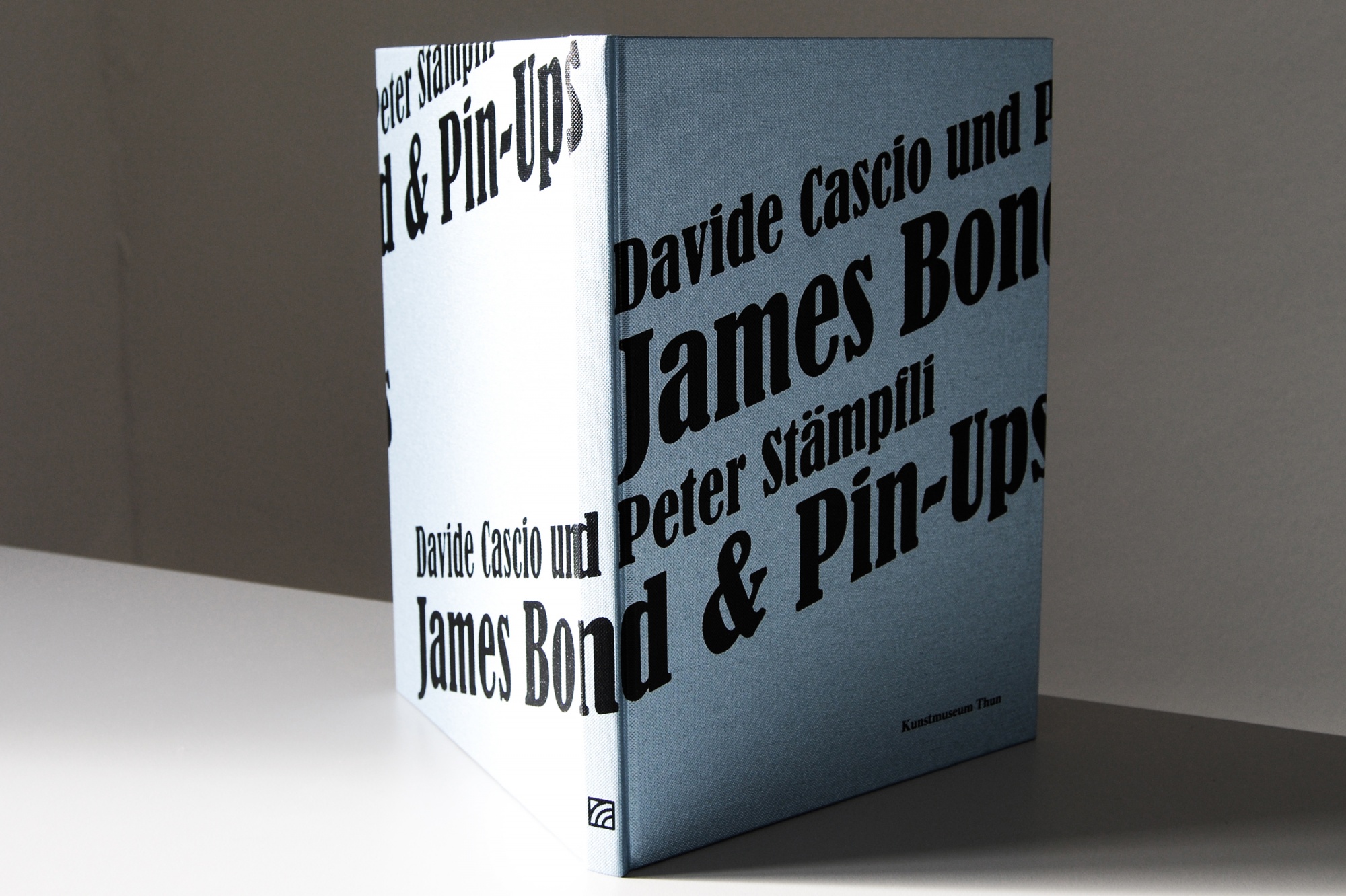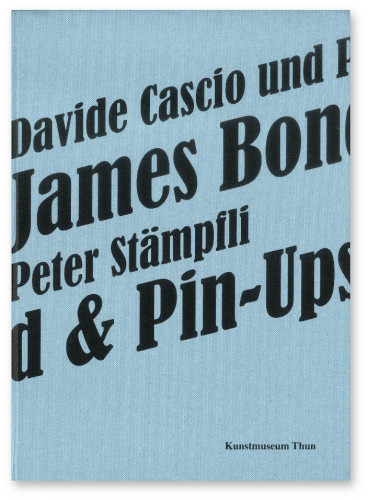James Bond & Pin-Ups
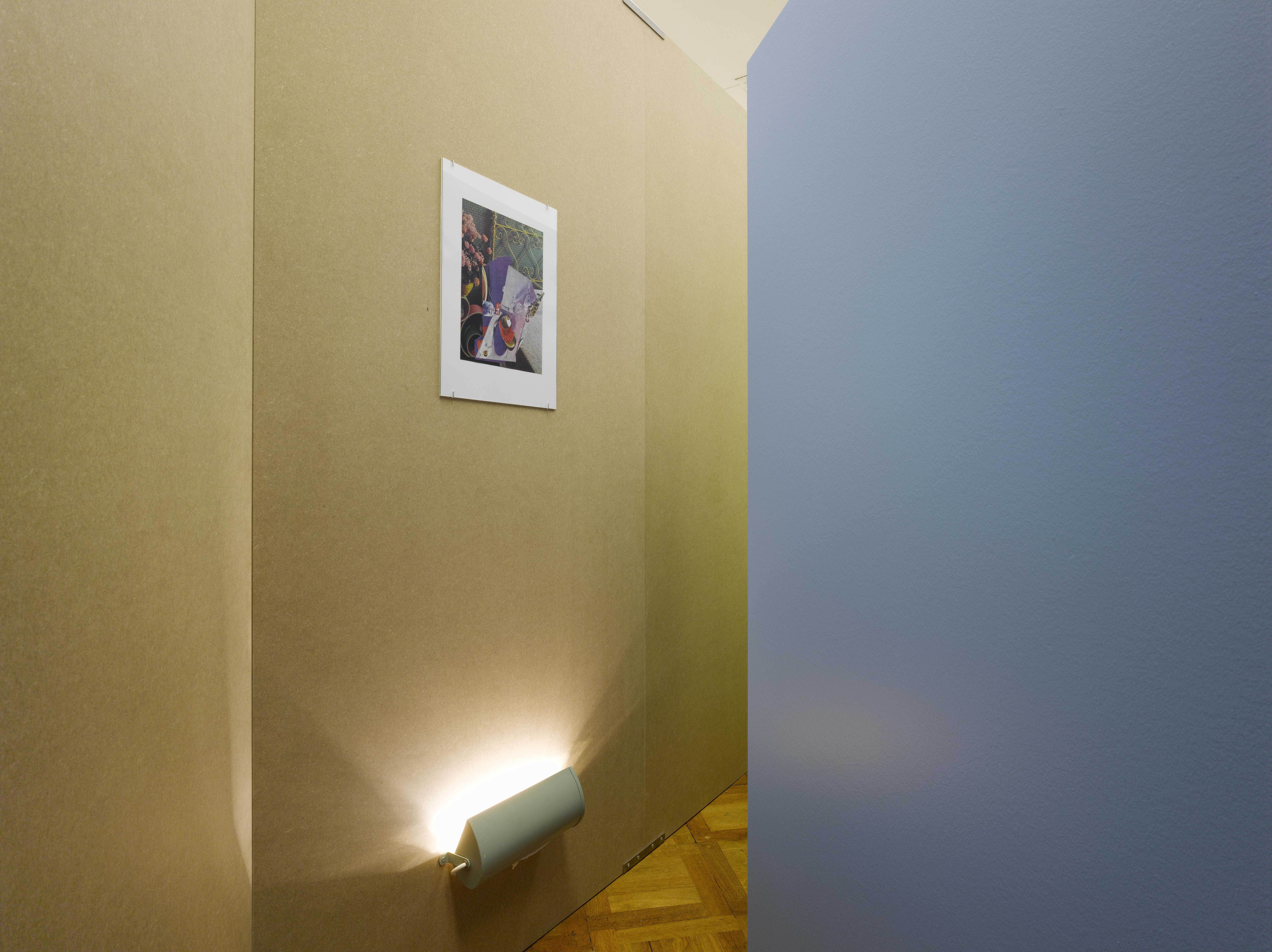

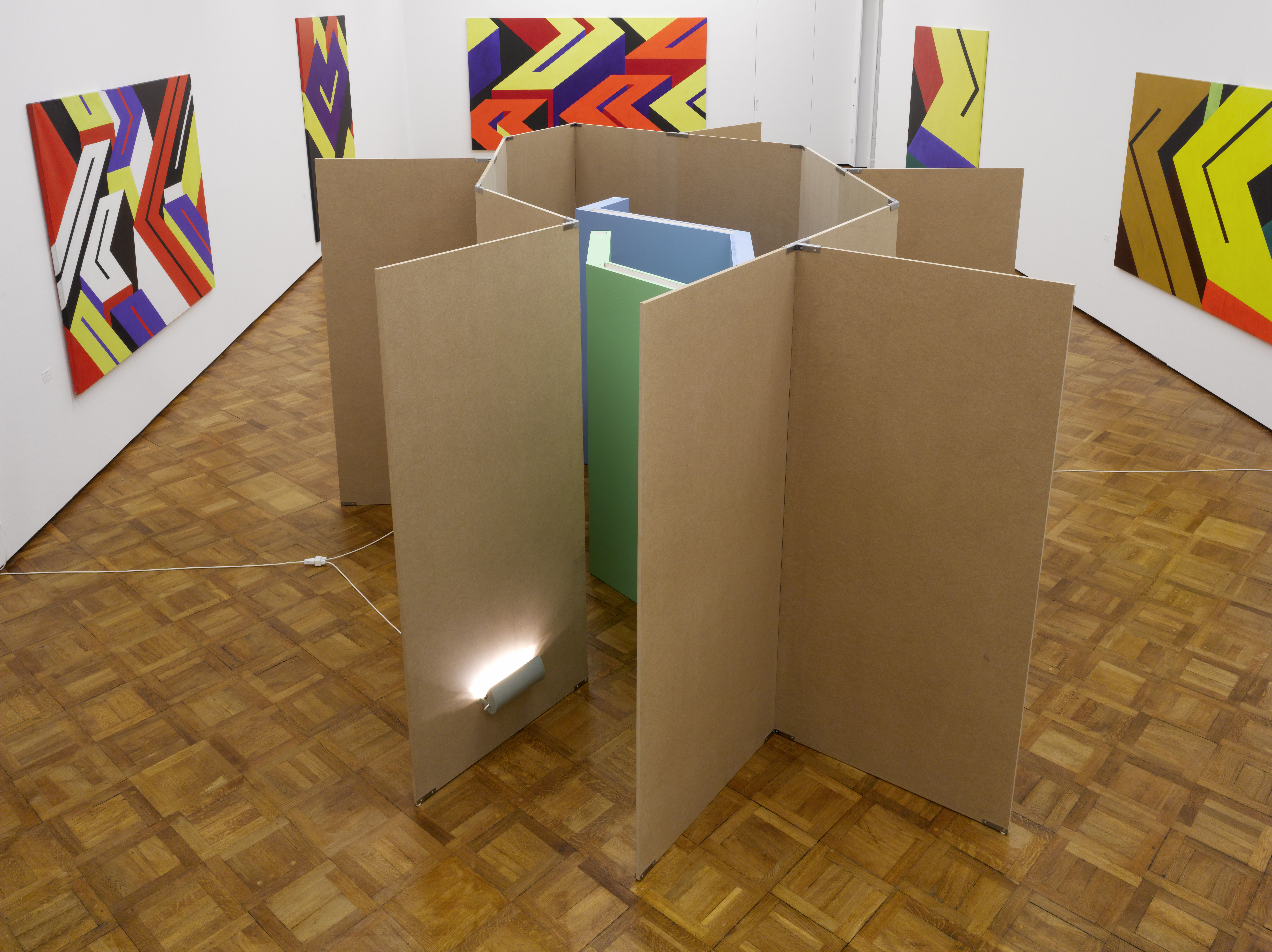






Mira
2011
MDF, wood, metal lamps, acrylic colour, collage on paper
520 x 420 x 226 cm
Kunstmusem Thun, Switzerland
Photo : Dominique Uldry

Wall / Floor carpet #1-3
2011
Fitted carpet
Variable dimensions


Interiors
2010
Collages on paper, MDF, textile, polyurethane
Variable dimensions
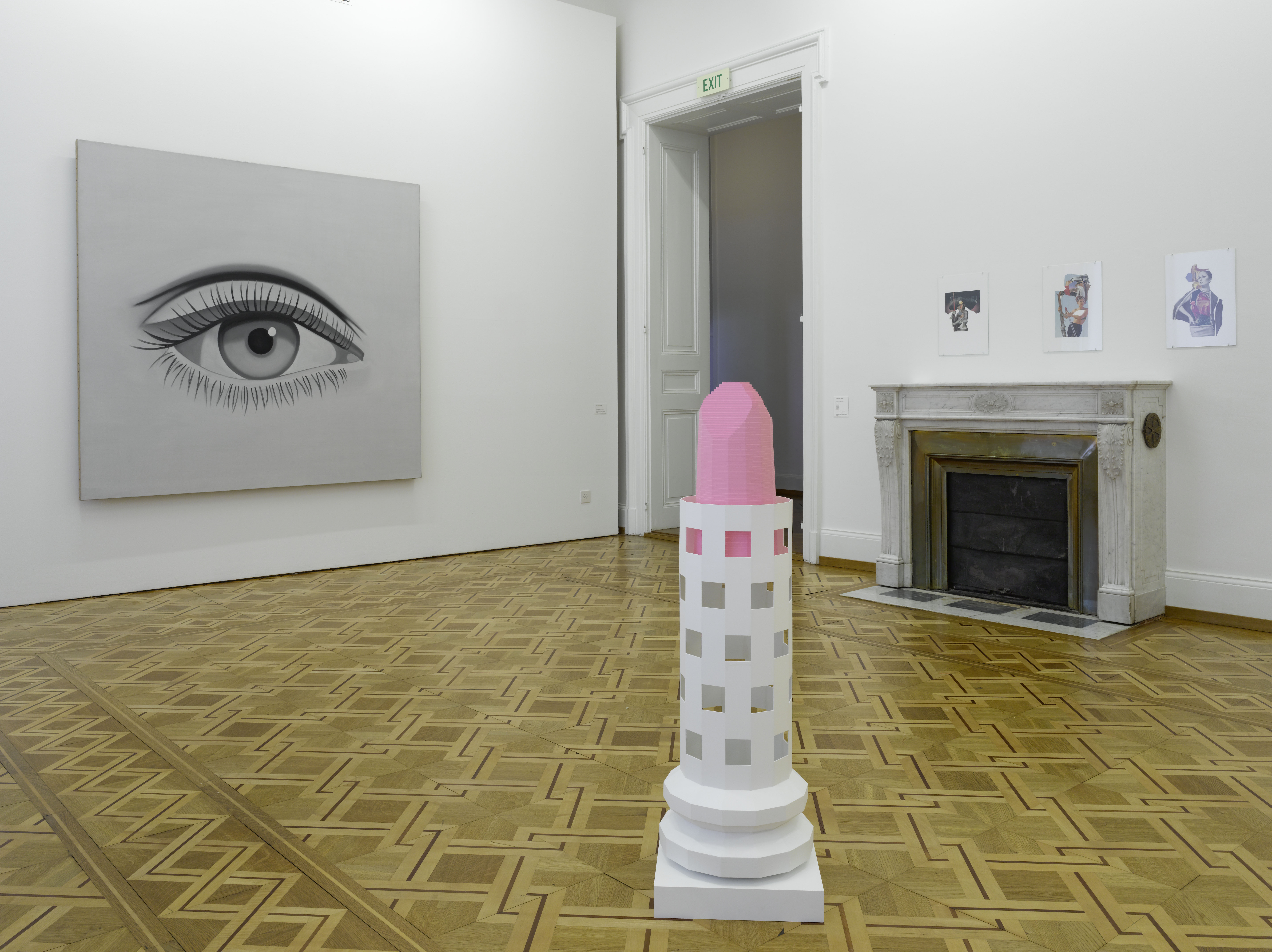
 A pin-ups cosmogony
A pin-ups cosmogony 2007
Collage on paper, Forex, Acrylic paint, ink, gouache, pencil
Variable dimensions
Collection Museo Cantonale d'Arte Lugano

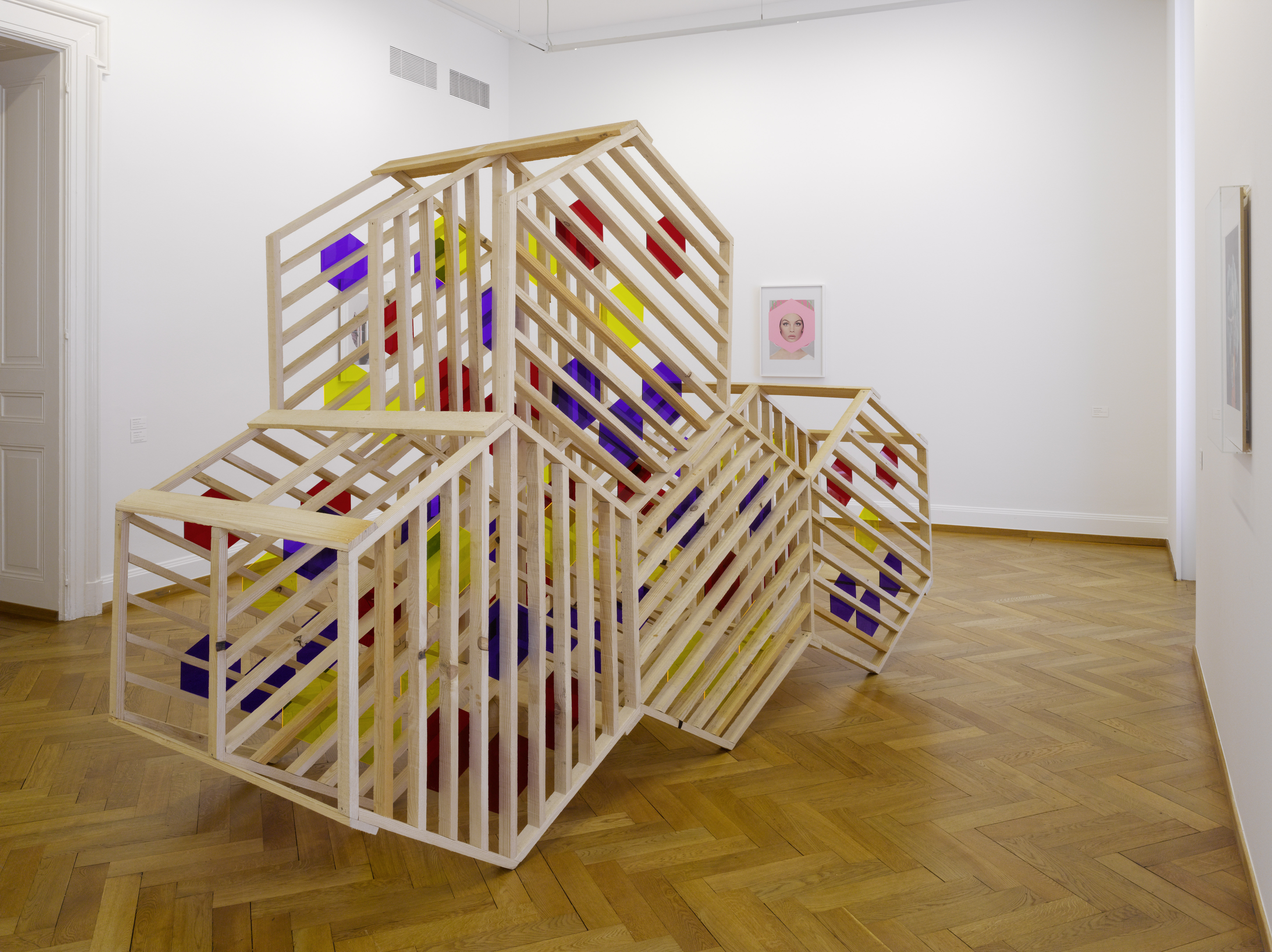
Be-building
2009
Wood, MDF, Plexiglass, collage
Variable dimensions
Courtesy Nicolas Krupp Contemporary Art




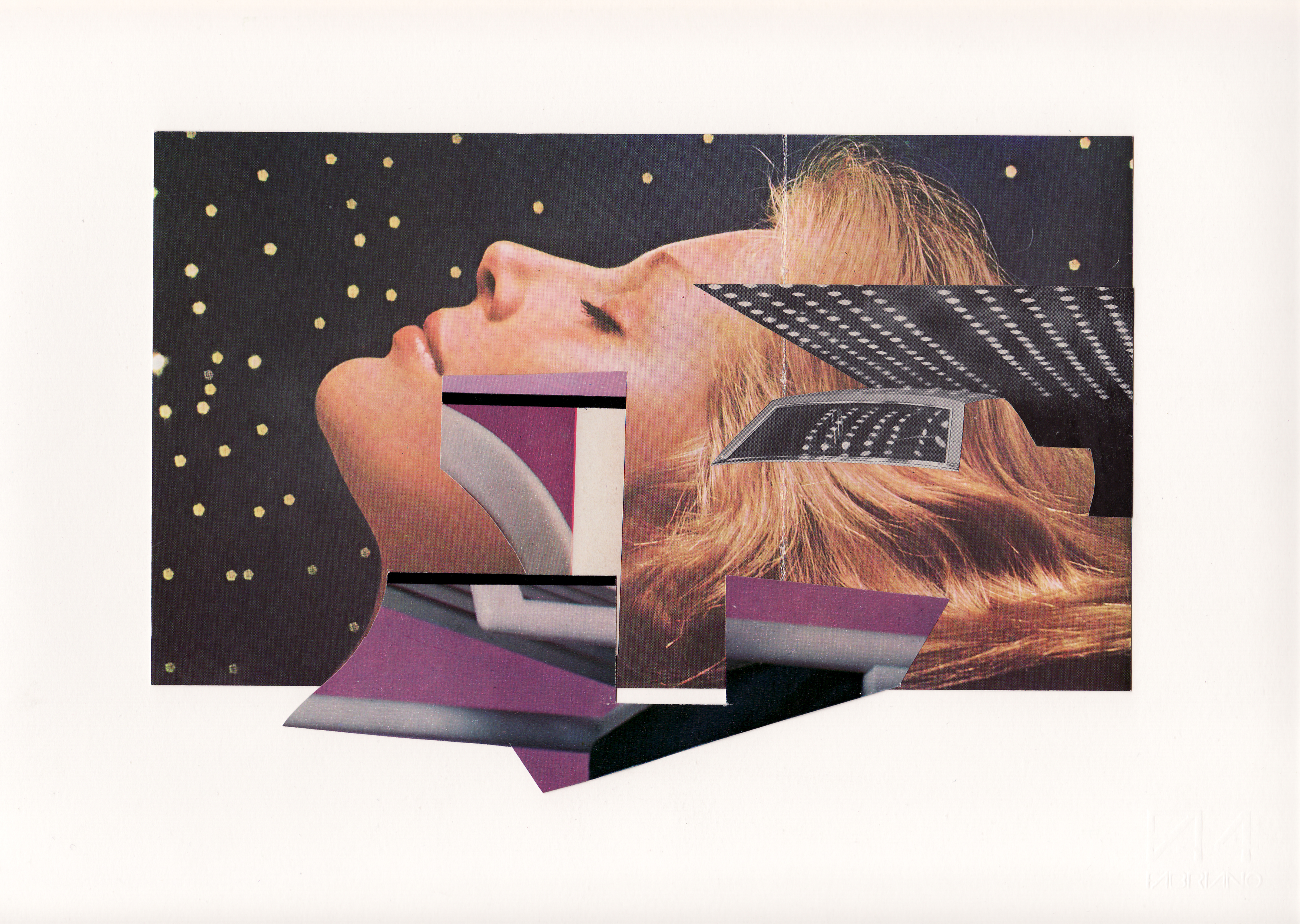
be-building
2009
collage on paper
33 x 24 cm and 24 x 33 cm
(1-9 collages)
James Bond & Pin-Ups with Peter Staempfli
Kunstmusem Thun
2011
Prof. Dr. Marie Theres Stauffer
The present and future of the past
At first glance, everything seems obvious. The troughs in the hilly, pastel-coloured object in Davide Cascio’s installation Interiors (2010) are perfect to sit on. At second glance you begin to doubt whether you really want to make use of it. It is not just the institutional context of the museum that causes one to hesitate. Even memories of works of art such as Sol LeWitt’s Eisberg (Iceberg) (Complex Form # 24) seem unwelcoming. Insofar as Cascio’s object already has the rounded shapes that evolve in the process of the cast, it is also reminiscent of melting ice cream. Another reason to refrain from sitting. This brings us from the shielded world of sublime works of art into the overwhelming realm of commodities. This shift from high to low, in the special context of Cascio’s furniture objects, recalls memories of pop art, including those from the Architettura Radicale movement of around 1970. At that time, young Italians created, in the overlapping areas of architecture and art, provocative design objects, that is, mass-produced commodities, which seemed decidedly unwieldy compared to the “design of good taste”, for which Italy had becom well known in the 20th century . The creative energies of Archizoom, Superstudio, Gaetano Pesce, Mario Bellini or Alessandro Mendini were much more focused on the challenges that were to be found in the field of the popular, of kitsch and bad taste. In their attitude, they picked up a lot – though not everything – from Pop Art.1 Why Cascio dealt with such a context will be discussed in more detail. First, however, it may be stated that when dealing with Cascio’s works, one can make connections with different genres (art, design, architecture), with space (USA, polar regions, deep freezers in grocery stores, Italy) and with time (from the present back to the 1960s) over and over again. Working with back references and cross- references has become a central strategy in contemporary art. So what Cascio creates is not new. But it is surprising because of its density and complexity of references. The great interest in the architecture of the 20th century and the manner in which architectural approaches are transferred to objects, installations and collages are also unusual. The fact that Italian inspiration particularly plays a role in Cascio’s work is apparent from his biography. The artist is from the Ticino region and has studied at various institutes, including the Accademia di Belle Arti in Rome. That some of his works benefit from the aesthetics of the Architettura Radicale is a specific choice of the artist in the immense cultural history of Italy.2 Cascio, however, seems to be interested not only in the aesthetics of such works between design and installation, but also in their utopian dimension. In his work, the Ticinese artist deals time and again with the visionary aspects in architecture, design or literature, in terms of the models of society associated with it. About forty years earlier the group, Archizoom, visualised reflections on the social potential of product design in their trashy Dream Beds (1967). These bed designs are meant to be serious reflections on the production cycles of the capitalist consumer society as well as an ironic commentary on the lifestyle of open-minded people around 1970.3 Architettura Radicale, however, questioned not only design but also the function of architectural utopia – another important theme in the Ticinese artist’s works. With the photo montages of Il monumento continuo (1969–1971), Superstudio developed a poetic visual discourse that gave an impetus to Cascio’s representational strategies.4 There exists more than an atmospheric similarity between Cascio’s collages and Superstudio’s photo montages. Also striking is the handling of grid structures and associated with it, geometrisation as an ordering moment. In Italy geometry has been understood for centuries as the central foundation of architecture. The predilection of Italian Renaissance architects for perfect geometrical figures seems to be reactivated not only in Cascio’s early works such as Polyhedra (a room in which to read Joyce‘s Ulysses) (2004), Geometrical long-awaited apparitions (2005), or Tabula/Octaedron (2005), but also in the titles of his Pin-Ups series (pp. 22–35): figures have been given names such as Icosahedron, Dodecahedron, Hexagon or Square. Especially the square is encountered in Cascio’s projects time and again: joined to a cube, it spreads out in space in modular fashion. The Ticinese artist has undertaken research on the potential of the space lattice not only in the Italian Radicals. Flexible structures that spread uniformly over the territory and can be continuously adjusted to human needs was a topic that had been gaining significance in architecture since the mid-1950s. The urban utopia Ville spatiale, continuously developed by Yona Friedman since 1958, is one of the projects referred to by Cascio time and time again.
The artist transfers the subject of structure, flexibility, construction and reconstruction into the context of art to create something new that nonetheless retains its utopian function. The “source material” here experiences not only a transformation and reinterpretation, it is also overlaid with forms and content that come from different visual worlds. Translucent surfaces in primary colours, for example, which are indeed customary in architecture, but which in Cascio’s installations also create diverse cross-references to other works of art. An example of this is the version of Be-building shown in Thun: an expansive structure that has an aesthetic autonomy, without being amnesic. The pun in the title of this installation, which can be rendered only circuitously and roughly in German as “Be-bauung, sei ein Bau”, was transformed by Cascio into a tapered shape in a 2008 version, revealing itself as a small, almost frail-looking pavilion. This pavilion was temporarily installed somewhere in a green setting. Its freedom from location, as well as the fact that it can be transported, reveal signs of the dream of mobile architecture from the 1950s and 1960s. At the same time, the subject of the original human habitation echoes in the hut-like appearance. Myths about the primitive hut have been recorded in the architectural-theoretical discourse since ancient times. As “retroactive” utopias, they belong to a territory that Cascio explores repeatedly. It is no coincidence that the artist refers elsewhere to one of the most well-known primitive huts of the 20th century: to Le Corbusier’s wooden Cabanon, a single-room holiday house on Cap Martin.5 In Cascio’s collages, one encounters on the other hand a variation of the utopian, where the focus is on “reactivating” moments. In Thun, collages are part of both the installation Interiors and the Pin-Ups Cosmogony. For the Interiors the Ticinese artist has used the images of the 1960s as a basis. These photographs printed in magazines on the one hand convey aesthetic ideals of a particular time, and on the other they are evidence of the timeless search (because it never stops) for a habitat in harmony with human needs. As is known, the staged quality of such model furnishings is characterised by their appearing to be too much “from a single cast”. Cascio creates disruptions through his mounted elements and enriches the harmonised installations through foreign elements from other contexts. Such enrichments in this sense act as disruptive factors, insofar as it is usually not quite clear what their purpose is. So how should you interpret these cropped images of living spaces, which are pasted over with bits and pieces of images of things? Not least, these partially legible or illegible elements are a means to engage the viewer, to encourage him to participate intellectually in these engineered living environments. Similarly, one can see in it a quaint gesture: a compositional measure by which the spatiality of the carrier medium is transferred onto the flatness of the painting. So if the focus here is on residential ideals that are not only historically significant but are also among the preferred furniture of today’s creative class, the various possibilities of painting and architecture are also dealt with simultaneously in the process. An unmistakable trace of melancholy emanates from these “disturbed” residential worlds. A feature that is also peculiar to the Pin-Ups collages. In Thun the twelve images are placed at an angle to a geometricised “Lipstick Monument” and brought together under the metaphysical concept of cosmogony. So, if this can be seen as an explanatory model for the world of Pin-Ups, one must also assume that it is an ironic meta-comment of the artist. With this work, Cascio basically circumvents the conventional type of Pin-Up in that its cheerful innocuousness tilts towards the already mentioned melancholic atmosphere. Not only the historical distance to the used graphical material from the 1960s is responsible for this, but also the predominantly restrained countenances of Cascio’s women. The collage titled Melancolia I gets to the heart of the dominant mood. Such an atmospheric character has often been noted in British Pop Art, as in Richard Hamilton’s interiors, as well as in montages of the group Superstudio. A further irony can be seen in the fact that Cascio used mostly fashion images in which women’s bodies are wrapped in clothes, instead of suggesting disclosure. Not only that, Cascio pasted over the bodies of his fashionably styled models with cut-outs from fabrics, furs, feathers, fruits, plants, crystals or monochromatic colour fields. These materials also form the backdrop to the carefully orchestrated figures. Such a setting accumulates an overflowing amount of material textures that exhibit a wide variety of haptic properties. If this evokes not only visual stimuli, but also the association of tactile stimuli, then the sensory dimension in such Pin-Ups is ultimately not hidden, but is actually quite radicalised. Cascio’s multifaceted works open visual worlds that on the one hand reactivate time-bound aesthetic ideals. On the other hand, the creative energy in the works that was used earlier on the creation of living environments is transformed into the present and made accessible in a multi-layered manner to the contemporaries who want to see. “What you see is what you see.”6
1 See inter alia Ambasz, Emilio (Hrsg.). Italy. The new domestic landscape, exhibition catalogue in the Museum of Modern Art, New York, Greenwich Connecticut: New York Graphic Society; Florence: Centro Di, 1972; Pettena, Gianni (editor). Radicals. Architettura e design 1960/75, Catalogue of the Venice Architecture Biennale, Florence: Il Ventilabro; Venice: Edizioni La Biennale di Venezia, 1996; Stauffer, Marie Theres. Figurationen des Utopischen. Theoretische Projekte von Archizoom und Superstudio. Munich/Berlin: Deutscher Kunstverlag, 2008.
2 However, it is certainly not the only reference context within the history of Italian art. Cascio’s references have a wide historical horizon.
3 See inter alia Pettena 1996, Stauffer 2008.
4 Superstudio. Discorso per immagini, in: Domus, No. 481, 1969, pp. 44-45; Ibid “Deserti naturali e artificiali. Il monumento continuo. Storyboard per un film”, in: Casabella, No. 358, 1971, pp. 18-22.
5 Most recently in the work Where the apprentice is a master-craftsman (2010), exhibited at the Palais de Tokyo, Paris. On Cascio‘s website the installation is accom- panied by Le Corbusier‘s comment on the cabanon: “I have a château on the French Riviera that measures 3.66 m x 3.66 m”
6 This statement is originally from Frank Stella, made in 1964 regarding his own works.
Kunstmusem Thun
2011
Prof. Dr. Marie Theres Stauffer
The present and future of the past
At first glance, everything seems obvious. The troughs in the hilly, pastel-coloured object in Davide Cascio’s installation Interiors (2010) are perfect to sit on. At second glance you begin to doubt whether you really want to make use of it. It is not just the institutional context of the museum that causes one to hesitate. Even memories of works of art such as Sol LeWitt’s Eisberg (Iceberg) (Complex Form # 24) seem unwelcoming. Insofar as Cascio’s object already has the rounded shapes that evolve in the process of the cast, it is also reminiscent of melting ice cream. Another reason to refrain from sitting. This brings us from the shielded world of sublime works of art into the overwhelming realm of commodities. This shift from high to low, in the special context of Cascio’s furniture objects, recalls memories of pop art, including those from the Architettura Radicale movement of around 1970. At that time, young Italians created, in the overlapping areas of architecture and art, provocative design objects, that is, mass-produced commodities, which seemed decidedly unwieldy compared to the “design of good taste”, for which Italy had becom well known in the 20th century . The creative energies of Archizoom, Superstudio, Gaetano Pesce, Mario Bellini or Alessandro Mendini were much more focused on the challenges that were to be found in the field of the popular, of kitsch and bad taste. In their attitude, they picked up a lot – though not everything – from Pop Art.1 Why Cascio dealt with such a context will be discussed in more detail. First, however, it may be stated that when dealing with Cascio’s works, one can make connections with different genres (art, design, architecture), with space (USA, polar regions, deep freezers in grocery stores, Italy) and with time (from the present back to the 1960s) over and over again. Working with back references and cross- references has become a central strategy in contemporary art. So what Cascio creates is not new. But it is surprising because of its density and complexity of references. The great interest in the architecture of the 20th century and the manner in which architectural approaches are transferred to objects, installations and collages are also unusual. The fact that Italian inspiration particularly plays a role in Cascio’s work is apparent from his biography. The artist is from the Ticino region and has studied at various institutes, including the Accademia di Belle Arti in Rome. That some of his works benefit from the aesthetics of the Architettura Radicale is a specific choice of the artist in the immense cultural history of Italy.2 Cascio, however, seems to be interested not only in the aesthetics of such works between design and installation, but also in their utopian dimension. In his work, the Ticinese artist deals time and again with the visionary aspects in architecture, design or literature, in terms of the models of society associated with it. About forty years earlier the group, Archizoom, visualised reflections on the social potential of product design in their trashy Dream Beds (1967). These bed designs are meant to be serious reflections on the production cycles of the capitalist consumer society as well as an ironic commentary on the lifestyle of open-minded people around 1970.3 Architettura Radicale, however, questioned not only design but also the function of architectural utopia – another important theme in the Ticinese artist’s works. With the photo montages of Il monumento continuo (1969–1971), Superstudio developed a poetic visual discourse that gave an impetus to Cascio’s representational strategies.4 There exists more than an atmospheric similarity between Cascio’s collages and Superstudio’s photo montages. Also striking is the handling of grid structures and associated with it, geometrisation as an ordering moment. In Italy geometry has been understood for centuries as the central foundation of architecture. The predilection of Italian Renaissance architects for perfect geometrical figures seems to be reactivated not only in Cascio’s early works such as Polyhedra (a room in which to read Joyce‘s Ulysses) (2004), Geometrical long-awaited apparitions (2005), or Tabula/Octaedron (2005), but also in the titles of his Pin-Ups series (pp. 22–35): figures have been given names such as Icosahedron, Dodecahedron, Hexagon or Square. Especially the square is encountered in Cascio’s projects time and again: joined to a cube, it spreads out in space in modular fashion. The Ticinese artist has undertaken research on the potential of the space lattice not only in the Italian Radicals. Flexible structures that spread uniformly over the territory and can be continuously adjusted to human needs was a topic that had been gaining significance in architecture since the mid-1950s. The urban utopia Ville spatiale, continuously developed by Yona Friedman since 1958, is one of the projects referred to by Cascio time and time again.
The artist transfers the subject of structure, flexibility, construction and reconstruction into the context of art to create something new that nonetheless retains its utopian function. The “source material” here experiences not only a transformation and reinterpretation, it is also overlaid with forms and content that come from different visual worlds. Translucent surfaces in primary colours, for example, which are indeed customary in architecture, but which in Cascio’s installations also create diverse cross-references to other works of art. An example of this is the version of Be-building shown in Thun: an expansive structure that has an aesthetic autonomy, without being amnesic. The pun in the title of this installation, which can be rendered only circuitously and roughly in German as “Be-bauung, sei ein Bau”, was transformed by Cascio into a tapered shape in a 2008 version, revealing itself as a small, almost frail-looking pavilion. This pavilion was temporarily installed somewhere in a green setting. Its freedom from location, as well as the fact that it can be transported, reveal signs of the dream of mobile architecture from the 1950s and 1960s. At the same time, the subject of the original human habitation echoes in the hut-like appearance. Myths about the primitive hut have been recorded in the architectural-theoretical discourse since ancient times. As “retroactive” utopias, they belong to a territory that Cascio explores repeatedly. It is no coincidence that the artist refers elsewhere to one of the most well-known primitive huts of the 20th century: to Le Corbusier’s wooden Cabanon, a single-room holiday house on Cap Martin.5 In Cascio’s collages, one encounters on the other hand a variation of the utopian, where the focus is on “reactivating” moments. In Thun, collages are part of both the installation Interiors and the Pin-Ups Cosmogony. For the Interiors the Ticinese artist has used the images of the 1960s as a basis. These photographs printed in magazines on the one hand convey aesthetic ideals of a particular time, and on the other they are evidence of the timeless search (because it never stops) for a habitat in harmony with human needs. As is known, the staged quality of such model furnishings is characterised by their appearing to be too much “from a single cast”. Cascio creates disruptions through his mounted elements and enriches the harmonised installations through foreign elements from other contexts. Such enrichments in this sense act as disruptive factors, insofar as it is usually not quite clear what their purpose is. So how should you interpret these cropped images of living spaces, which are pasted over with bits and pieces of images of things? Not least, these partially legible or illegible elements are a means to engage the viewer, to encourage him to participate intellectually in these engineered living environments. Similarly, one can see in it a quaint gesture: a compositional measure by which the spatiality of the carrier medium is transferred onto the flatness of the painting. So if the focus here is on residential ideals that are not only historically significant but are also among the preferred furniture of today’s creative class, the various possibilities of painting and architecture are also dealt with simultaneously in the process. An unmistakable trace of melancholy emanates from these “disturbed” residential worlds. A feature that is also peculiar to the Pin-Ups collages. In Thun the twelve images are placed at an angle to a geometricised “Lipstick Monument” and brought together under the metaphysical concept of cosmogony. So, if this can be seen as an explanatory model for the world of Pin-Ups, one must also assume that it is an ironic meta-comment of the artist. With this work, Cascio basically circumvents the conventional type of Pin-Up in that its cheerful innocuousness tilts towards the already mentioned melancholic atmosphere. Not only the historical distance to the used graphical material from the 1960s is responsible for this, but also the predominantly restrained countenances of Cascio’s women. The collage titled Melancolia I gets to the heart of the dominant mood. Such an atmospheric character has often been noted in British Pop Art, as in Richard Hamilton’s interiors, as well as in montages of the group Superstudio. A further irony can be seen in the fact that Cascio used mostly fashion images in which women’s bodies are wrapped in clothes, instead of suggesting disclosure. Not only that, Cascio pasted over the bodies of his fashionably styled models with cut-outs from fabrics, furs, feathers, fruits, plants, crystals or monochromatic colour fields. These materials also form the backdrop to the carefully orchestrated figures. Such a setting accumulates an overflowing amount of material textures that exhibit a wide variety of haptic properties. If this evokes not only visual stimuli, but also the association of tactile stimuli, then the sensory dimension in such Pin-Ups is ultimately not hidden, but is actually quite radicalised. Cascio’s multifaceted works open visual worlds that on the one hand reactivate time-bound aesthetic ideals. On the other hand, the creative energy in the works that was used earlier on the creation of living environments is transformed into the present and made accessible in a multi-layered manner to the contemporaries who want to see. “What you see is what you see.”6
1 See inter alia Ambasz, Emilio (Hrsg.). Italy. The new domestic landscape, exhibition catalogue in the Museum of Modern Art, New York, Greenwich Connecticut: New York Graphic Society; Florence: Centro Di, 1972; Pettena, Gianni (editor). Radicals. Architettura e design 1960/75, Catalogue of the Venice Architecture Biennale, Florence: Il Ventilabro; Venice: Edizioni La Biennale di Venezia, 1996; Stauffer, Marie Theres. Figurationen des Utopischen. Theoretische Projekte von Archizoom und Superstudio. Munich/Berlin: Deutscher Kunstverlag, 2008.
2 However, it is certainly not the only reference context within the history of Italian art. Cascio’s references have a wide historical horizon.
3 See inter alia Pettena 1996, Stauffer 2008.
4 Superstudio. Discorso per immagini, in: Domus, No. 481, 1969, pp. 44-45; Ibid “Deserti naturali e artificiali. Il monumento continuo. Storyboard per un film”, in: Casabella, No. 358, 1971, pp. 18-22.
5 Most recently in the work Where the apprentice is a master-craftsman (2010), exhibited at the Palais de Tokyo, Paris. On Cascio‘s website the installation is accom- panied by Le Corbusier‘s comment on the cabanon: “I have a château on the French Riviera that measures 3.66 m x 3.66 m”
6 This statement is originally from Frank Stella, made in 1964 regarding his own works.
